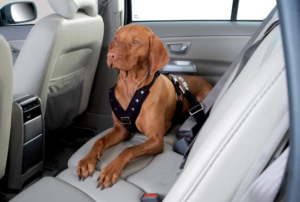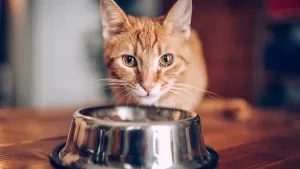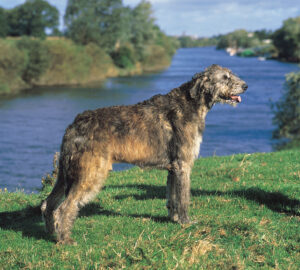Posts Tagged ‘veterinarian in Edwardsville’
Tips For Socializing Your Dog
 Socializing your dog teaches them how to react to the world around them healthily without any unnecessary fear or aggression. It is important to start socialization early, so it becomes their normal behavior. Ideally, it should be between three and 12 weeks of age, but not everyone is with their furry friend at that point in their life. Beyond 18 weeks, socialization gets a lot harder, but it is not impossible.
Socializing your dog teaches them how to react to the world around them healthily without any unnecessary fear or aggression. It is important to start socialization early, so it becomes their normal behavior. Ideally, it should be between three and 12 weeks of age, but not everyone is with their furry friend at that point in their life. Beyond 18 weeks, socialization gets a lot harder, but it is not impossible.
An important first step is to take your dog out on daily walks in public. This allows your dog to be exposed to many different experiences such as cars, other dogs, and strangers. The world becomes less scary after a few trips outside. Keep them on a short leash and take your dog on different routes to expose them to new sights and smells. Typically, new puppies should be exposed to different places, bodies of water, woods, beaches, and common neighborhood objects like street signs, bikes, strollers, skateboards, and benches.
Related, expose your dog to a wide variety of people such as men, women, and children so that they can get acclimated to the idea of people other than its owners. If your dog isn’t exposed to people other than its owners, it could become wary of anyone who isn’t their owner, so it is crucial to diversify whom your dog interacts with. Included in socialization is allowing your dog to meet unfamiliar people in unfamiliar clothes like hoods, jackets, sunglasses, and hats.
If your dog acts scared, stay calm and confident. Don’t push them, but don’t make a big deal out of their scared behavior. Use treats to give your dog a positive association with new people and experiences.
Socializing your dog allows them to enjoy the world around them and new experiences. To help your dog not fear new surroundings and people, start early, and show them all that your area has to offer! If you have any questions, feel free to contact Dr. Olsen at Olsen Veterinary Clinic at 618-656-5868.
Seatbelts For Dogs – What You Need To Know
 When you get into the car, you think about bucking yourself up. Your dog is most likely not getting their own seatbelt. In fact, 84 percent of pet owners don’t restrain their dogs on car trips according to a survey done by AAA. Even if you think you have the calmest dog in the world, your dog does need a seat belt. It helps keep them and the driver safe.
When you get into the car, you think about bucking yourself up. Your dog is most likely not getting their own seatbelt. In fact, 84 percent of pet owners don’t restrain their dogs on car trips according to a survey done by AAA. Even if you think you have the calmest dog in the world, your dog does need a seat belt. It helps keep them and the driver safe.
When dogs are restrained or contained in the car, they can’t distract the driver as much. According to the CDC, nine people are killed and 1,000 more injured because they were distracted while driving every day. While cell phones are the biggest distracter, your pet can be a major attention grabber too. Roughly two out of three dog owners admit to being distracted by their pup in the car. If you are in an accident, a dog without a seatbelt can turn into a deadly projectile. A ten-pound dog exerts 500 pounds of force during a 50-mph collision while a 60-pound dog becomes a 2,700-pound projectile at 35-mph. Overall, a dog without a seatbelt can cause serious damage in an accident.
Some states require pet restraint laws. So far, only three have laws that require your dog to buckle up in the car, Rhode Island, Hawaii, and New Jersey. Others forbid pets from riding in the back of pick-up trucks or on a driver’s lap. While Illinois does not have any specific pet restraint laws, you can still get a ticket for distracted driving if you get pulled over and your dog is not restrained. The safest place for dogs is in a carrier or harness in the back seat. Just as an airbag can damage a child, the same is for your pet. To get your pet used to a harness, start slowly with five-minute trips, and then expand to ten- and 15-minute rides. Eventually your dog will get used to it. During the outing, be sure to give your dog plenty of praise and a treat after the run.
When you get into the car, you think about bucking yourself up. Your dog is most likely not getting their own seatbelt. In fact, 84 percent of pet owners don’t restrain their dogs on car trips according to a survey done by AAA. Even if you think you have the calmest dog in the world, your dog does need a seat belt. It helps keep them and the driver safe. When dogs are restrained or contained in the car, they can’t distract the driver as much. According to the CDC, nine people are killed and 1,000 more injured because they were distracted while driving every day. While cell phones are the biggest distracter, your pet can be a major attention grabber too. Roughly two out of three dog owners admit to being distracted by their pup in the car.
If you are in an accident, a dog without a seatbelt can turn into a deadly projectile. A ten-pound dog exerts 500 pounds of force during a 50-mph collision while a 60-pound dog becomes a 2,700-pound projectile at 35-mph. Overall, a dog without a seatbelt can cause serious damage in an accident.
Some states require pet restraint laws. So far, only three have laws that require your dog to buckle up in the car, Rhode Island, Hawaii, and New Jersey. Others forbid pets from riding in the back of pick-up trucks or on a driver’s lap. While Illinois does not have any specific pet restraint laws, you can still get a ticket for distracted driving if you get pulled over and your dog is not restrained.
The safest place for dogs is in a carrier or harness in the back seat. Just as an airbag can damage a child, the same is for your pet. To get your pet used to a harness, start slowly with five-minute trips, and then expand to ten- and 15-minute rides. Eventually your dog will get used to it. During the outing, be sure to give your dog plenty of praise and a treat after the run.
It may be tempting to have your dog ride shotgun with you, but for their safety and yours, keep them buckled up in the back. With any questions, feel free to contact Dr. Olsen at Olsen Veterinary Clinic at 618-656-5868!
Can Cats and Birds Cohabitate?
 Cats and birds are natural opposites. Some cats won’t care about birds at all. Other times, the cat’s instinct to pounce, capture, and “play” with the bird will emerge. Either way, if you have a cat and bird cohabitating, it is important to have the proper precautions in place to keep both animals safe and healthy.
Cats and birds are natural opposites. Some cats won’t care about birds at all. Other times, the cat’s instinct to pounce, capture, and “play” with the bird will emerge. Either way, if you have a cat and bird cohabitating, it is important to have the proper precautions in place to keep both animals safe and healthy.
Cats can kill or hurt a bird very easily. With its sharp claws, it can wound the bird and possibly even give it an infection. Cats also pull out important feathers needed for flight, balance, and warmth. They can cause serious mental trauma to a bird that has endured an attack or threat. Cats can even eat small birds. Even though a cat is more dangerous to a bird than a bird is to a cat, bigger birds can seriously hurt a cat. With their strong beaks and claws, they could grab and bite a cat.
Even with the risks, there are ways that you can keep both the cat and bird safe. First, secure the bird cage in a serious manner. Make sure that the cat cannot get inside or knock the bird cage over. Small cages are often placed on tables and are easily knocked over. Make sure the cage is heavy enough that the cat cannot push it around. Be sure to use cage locks or carabiners to make sure the cat cannot open the bird cage doors.
Next, keep them in separate rooms. If you keep the bird cage in a room that the cat is not allowed it, you can avoid the extra stress that a stalking cat can cause for a bird.
Lastly, try and introduce your bird to your cat. It is typically a very slow process, and it starts with allowing your caged bird and cat to see each other from a distance. Eventually, you can lessen the distance between the two after ensuring both are comfortable and not stressed. Some people who have cats that show no signs of going into predator mode will take their bird out of its cage and allow the two to see each other without bars in the way. If you feel comfortable trying this, it must be done with great caution and awareness in case your bird tries to jump out of your hands, or your cat tries to pounce on the bird.
Cats and birds can cohabitate, if the owner takes proper precautions to keep both animals safe and calm. If you have any questions, feel free to contact Dr. Olsen at Olsen Veterinary Clinic at 618-656-5868.
Holiday Pet Gift Guide – 2021
 The holidays are a time for giving, and you can’t forget about your pets or a pet-lover in your life. I’ve assembled a list of the best pet gifts around to show your furry loved ones you care and help them participate in the holiday spirit.
The holidays are a time for giving, and you can’t forget about your pets or a pet-lover in your life. I’ve assembled a list of the best pet gifts around to show your furry loved ones you care and help them participate in the holiday spirit.
The easiest gift is that of more toys for your pet. You can get new toys you think they would like or replace the favorites that always seem to go missing. Here are some cute toy options that your pet would love. Here is a cute Christmas pickle dog toy. Here is a winter rope dog toy. Here is a cute snowman cat toy. Here is a catnip-based reindeer cat toy.
More practical, you could get new essentials like water or food bowls or new leashes. Items like these are always welcome since they get used daily by pets. Here is a nice modern option that is useful and still looks nice in your home. Here is the link.
For a more unique gift, you could get a pet DNA kit to see what their history is as an animal. For some kits, you can learn about their preferences as an individual animal. An example cat DNA test is linked here. Here is a dog DNA test. Here is a pet food and environmental intolerance test to see what bothers your pet.
You could also get your pet a nice jacket to keep them extra warm in the cold winter months. An example one for your dog is linked here. Maybe you’d like a more fun outfit to wear on the special holiday. An example is linked here.
Perhaps your dog likes to stick their head out the window. Some protective goggles for their eyes can be found linked here.
For the pet-lover in your life, you could get them a personalized pin for them to display their furry friend with pride. A handmade pin can be found linked here.
Maybe you are looking to splurge on your pet this winter. If your pet wants to go outside and is not allowed, or maybe they are getting old and can’t move as much as they used to but still wants to enjoy the outdoors, they could use a stroller like this one linked here to enjoy nature. Another splurge item could be this activity monitoring pet tracker. It’ll allow you to stay on top of your pet’s health.
Sharing the season of giving with your pets will only make it more enjoyable. If you have any questions, feel free to contact Dr. Olsen at 618-656-5868 or send him an email here!
Introducing Your Cat To A Newly Adopted Cat: 6 Tips for Success
 Adopting a cat can do a lot of good. You are giving a cat a loving home who may not have had one before. However, if you already have one or more cats at home, introducing a new feline can be tricky. Especially so if the cats have different personality or between a cat that loves being an only-child and a new kitten. To avoid any extra stress, here are six tips to help your cats acclimate.
Adopting a cat can do a lot of good. You are giving a cat a loving home who may not have had one before. However, if you already have one or more cats at home, introducing a new feline can be tricky. Especially so if the cats have different personality or between a cat that loves being an only-child and a new kitten. To avoid any extra stress, here are six tips to help your cats acclimate.
Create a Separate Kitten Space
When bringing a new cat home, the first thing should always be to provide your feline with a safe place. This space gives your cat a sense of familiarity and a place to retreat to if the new house ever gets overwhelmed. This area should be secure from the rest of the house and other felines. In this space, you should have a litter box, food bowl, water bowl, and plenty of toys to keep your kitten occupied when you aren’t home. You should also have safe hiding and sleeping areas for maximum comfort.
Handle Vet Visits Right Away
Part of the adoption process is a regular vet check-up. Schedule your kitten’s first visits to the vet on the same day you plan to bring your cat home. This should include a wellness exam, vaccinations needed, and a discussion about spaying or neutering if your kitten is not already fixed.
In addition, take some time to trim your kitten’s claws and groom its fur before leaving the cat in their designated space. Not only do these tasks help you bond with your new cat, but they also can reduce the risk of stress responses to the presence of the resident cat.
Introduce the Cats Slowly
Cats are very territorial. A new kitten can feel like a threat to your resident cat, so it is important to make new introductions slowly. Anticipate keeping the kitten separate for at least a few days. After the first day or two, give each of your cats an item with the other animal’s scent on it. A blanket, cushion, or fabric toy for example. Place this item in an area where your cat feels comfortable. Avoid specifically approaching either cat with a scented item, as it could be understood as a threat.
Once your cats get used to each other’s scents, you can allow them to interact in limited ways. For example, let them interact through a baby gate or sniff under the door of the other cat’s designated area. Only after your cats begin to behave normally when in proximity to each other should you allow them to meet.
Keep Watch for Any Warning Signs
Change can be extremely upsetting for your cats. Your resident cat may feel like its space is being violated and your new kitten may struggle to get used to a new home and a new sibling at the same time. If either cat gets aggressive, start the introduction process over by separating the cats. This helps your animals and their autonomy and safety feel less threatened.
Stay Patient Through the Introductions
Many cats can learn to live together, but it’s up to you to give them time to get used to the idea. The introduction process should take no less than a week’s time. Before bringing a new cat home, ensure that you have the time and resources to handle this process with care and compassion. You will need to spend dedicated time with both cats to ease the transition and bond.
Understand How to Respond to Aggression
When cats begin to live with each other, they may play fight or compete for attention or toys. For the first few days after your cats are allowed to interact freely, pay attention to their behavior. Normal play may involve a fair amount of batting, pouncing, and so on. If you see threat displays like hissing and arching, distract the cats with a loud noise or toy so that they can retreat. If possible, avoid letting serious physical altercations occur. If necessary, separate the cats until they both calm down. A fight could mean injuries for you and your cats.
Introducing a new cat can be tricky, but with some patience, you can build a happy family with your new felines. Feel free to contact us here or call Olsen Veterinary Clinic at 618-656-5868 with any questions.
What to Do Before Adopting a New Pet
 Adopting a pet is an exciting time for you and your family. However, it can be very overwhelming before your new furry friend comes home. Today, we will be discussing what you should do before your new pet comes to their forever home.
Adopting a pet is an exciting time for you and your family. However, it can be very overwhelming before your new furry friend comes home. Today, we will be discussing what you should do before your new pet comes to their forever home.
First, you should consider your current family. Do you have any other pets? How will they react to bringing in a new pet into the home? You also need to consider how your current home will serve for your new pet. Will your social life or work obligations affect your ability to care for this new pet? How do the other people you live with feel about having a new pet in the house? Are there any health issues that need to be accommodated? What kind of lifestyle do you want to live with your new pet? Are you looking for a dog to go running with or a cat to chill with? Are you in the position to train a pet with behavior issues or are you looking for a more relaxed pet experience? All these questions serve as a guide as to what kind, if any, pet you should adopt. If your current life is not suitable for a pet, maybe it’d be best to wait some time to where you will be more prepared to give your new pet the life they deserve.
More likely than not, the adopting agency will charge a fee to help mediate the costs of taking in unwanted or lost animals. This adoption fee will be a tiny fraction of money compared to how much money you will be spending over the life of your pet. You may also need to pay for your pet to be spayed or neutered before bringing them home. Some mandatory expenses of caring for a pet include food, veterinary care, licensing, collars/leashes/ID tags, cat litter, and grooming supplies. Other expenses that are highly recommended but not mandatory are permanent identification in the form of microchipping, training classes, professional grooming, spare supplies, beds, toys, crates, or carriers. There is also the chance that your furry friend will need emergency veterinary care which can get quite pricy. Before adopting a pet, it is important to make sure that you have the right financial state to be able to care and provide for your pet.
Before bringing your new pet home, you need to make sure that you will have the time to spend on taking care of your pet. Pets need to be fed two to three times a day. A pet parent should spend at least one hour per day giving direct attention to your pet in the form of training, exercising, grooming, or playing with them. A pet with a lot of energy will need more time to exercise and play with toys. Pets with long coats will need twenty minutes per day of grooming to keep their coat silky and not matted. Pets with medical conditions will also need extra attention. In the beginning of your adopted pet being home, they may need additional bonding and reassurance time in the first few weeks.
If you are completely prepared to give your pet the best life possible, the last thing you will need to supply are the necessary items for pet care. For dogs, these are food and water bowls, food, collars, leashes, ID tags, a bed, shampoo, nail clippers, brush/comb, poop baggies, toys, treats, and first aid supplies. For cats, they will need food and water bowls, food, kitty litter, collars, ID tag, carrier, nail clippers, brush/comb, toys, and first aid supplies. It could be best, however, to wait to see the size of your new pet for some of these items, as they will vary based on how big or small your new friend is.
Adopting a pet is an enjoyable yet stressful time in one’s life. Hopefully this list of preparation has made you feel more relaxed and prepared to bring your furry friend home. As always, feel free to contact Dr. Olsen at Olsen Veterinary Clinic at 618-656-5868 with any questions.
What Nutrients Does My Cat Need?
 It can be hard to determine what nutrients you cat needs. There are so many options, and it can be very overwhelming. Each option says you need something different. What is the easiest way to give your cat all of the nutrients it needs?
It can be hard to determine what nutrients you cat needs. There are so many options, and it can be very overwhelming. Each option says you need something different. What is the easiest way to give your cat all of the nutrients it needs?
The simplest way is to make sure that your cat is being fed foods that have an Association of American Feed Control Officials (AAFCO) statement of nutritional adequacy on their labels. It could be something like the sentence, “Animal feeding tests using AAFCO procedures substantiate that Yummy Cat Food provides complete and balanced nutrition for adult maintenance, growth and reproduction, or all life stages” or “Yummy Cat Food is formulated to meet the nutritional levels established by the AAFCO Cat Food Nutrient Profiles for adult maintenance, growth and reproduction, or all life stages”.
Essentially, the AAFCO looks for the proper amounts of each nutrient to keep your cat happy and healthy. These nutrients involve lots of protein as cats are carnivores after all. Protein provides energy, maintain muscle, skin, fur, nails, etc. Cats need animal proteins because their bodies need the nutrients it provides. When a cat eats protein, their digestive tract breaks it down into amino acids, which are then reassembled into the type of protein that the cat needs at that time. Animal protein can be expensive, so some cat food manufacturers keep costs low by including only the minimum amount of protein that cats require to survive, not more to help them thrive. A cats crude protein level should be included in the guaranteed analysis section on the label. To bee nutritionally complete and balanced, AAFCO mandates that a cat food for adult maintenance contain a cat food for adult maintenance contain a minimum of 26% crude protein on a dry matter basis. The minimum for growth and reproduction is 30%.
Another important energy source for cats is fat. Fat and the related fatty acids are parts of ingredients like salmon, chicken, liver, or beef. Sometimes, extra fat is added to foods in the forms of beef fat, fish oil, or soybean oil. The AAFCO minimum for fat in all cat foods is 9% on a dry matter basis. Significantly higher levels of fat may be appropriate for cats who are highly active or have trouble maintaining their weight. Diets designed for weight loss will usually contain less fat in comparison to other foods.
Carbohydrates are less important for cats than they are for humans. A diet containing large amounts of carbohydrates is not natural for cats and may promote weight gain and related health problems. Ideally cats should get less than 10% of their calories from carbohydrates.
Vitamins are necessary in a cat’s diet. Sources include animal tissues, vegetables, fruits, vegetable oils, seeds, and grains. However, it is almost impossible to provide all the vitamins a cat needs at the right levels without including a vitamin supplement in the manufacturing process. If a cat is healthy and eating a nutritionally complete diet, additional vitamin supplementation is not necessary and can be dangerous in some cases. Be sure to discuss with your vet if you think your cat needs supplementation. Related, minerals are another important part of your cat’s diet to help your cat’s body function. Some of the minerals that cats need can come from animal and plant-based ingredients (bone meal, for example), but to be nutritionally complete and balanced, cat food manufacturers almost always must add mineral supplements to their formulas. As long as your cat is healthy and eating a good quality food, you shouldn’t have to add any additional supplementation.
The most important nutrient for cats is water. Water is essential for almost every one of your cat’s metabolic functions. Cats will typically let themselves get dehydrated before they seek out water, so water is necessary in their foods. Some ingredients, like whole meats, are rich in water. Water is also added to commercial cat foods as part of the manufacturing process to facilitate mixing. You may see this on the ingredient list as “water sufficient for processing.” Most of the water is subsequently driven out of dry foods to make them more shelf stable. Generally, cats need about 4 to 5 ounces of water per 5 pounds of body weight, but this includes both water from food and water bowls. Cats who eat canned food may only need to drink very little supplemental water.
If you are feeding your cat a good quality food, your cat is getting its essential vitamins and nutrients. To be even more certain, you can look for an AAFCO certification. As always, if you have any questions, feel free to contact Dr. Olsen at Olsen Veterinary Clinic, 618-656-5868.
Dr. Olsen’s Breed Spotlight: The Irish Wolfhound
 For this next breed spotlight, I will be introducing you to the Irish wolfhound, likely for the first time. This dog is calm, dignified, and the tallest breed of dog (sorry Great Danes). Early ancestors of Irish wolfhounds were fearless, big-game hunters who could dispatch a wolf in single combat. Today, they are the most serene and agreeable of companions.
For this next breed spotlight, I will be introducing you to the Irish wolfhound, likely for the first time. This dog is calm, dignified, and the tallest breed of dog (sorry Great Danes). Early ancestors of Irish wolfhounds were fearless, big-game hunters who could dispatch a wolf in single combat. Today, they are the most serene and agreeable of companions.
The amiable Irish Wolfhound is an immense and muscular hound. They are built along classic Greyhound lines, capable of great speeds at a gallop. A male might stand nearly three feet at the shoulder and can weigh up to 180 pounds. Females will run smaller but are still a very large dog. They have a rough and hard coat that can come in many colors. They can be white, gray, brindle, red, black, and fawn. Irish wolfhounds are way too serene to be fierce guard dogs, but the mere sight of the size of these dogs are enough to deter intruders. Irish wolfhounds are characteristically patient with kids, but their size does require supervision when they are around small children.
The history of this wolfhound goes back to the breeding of indigenous large dogs of Britain to the Middle Eastern coursing hounds that were bartered around the known world in the earliest days of international trade. By the time the Roman Empire had gained a toehold in the British Isles, the giant hounds of Ireland were already long established. In the year 391, the Roman consul received a gift of seven of these hounds that “all Rome viewed with wonder”. These majestic hunters, whose motto was “gentle when stroked, fierce when provoked”, were used on such quarry as the now-extinct Irish elk, a massive, ferocious beast said to stand six feet at the shoulder. In 15th-century Ireland, wolves were overrunning the countryside. The Irish hounds, already renowned big-game hunters, began to specialize on wolves. By the late 1700s, when wolves and other big-game animals of Ireland were hunted to extinctions, Irish wolfhounds lost their job and nearly went extinct themselves. This is a case of a breed doing its job too well for its own good. In 1862, British army captain George Augustus Graham began scouring the country for remaining specimens of Ireland’s national hound. Graham made it his life’s work to protect, standardize, and promote the breed. Today, his name is still spoken with reverence wherever Irish wolfhound fanciers gather.
The coats of Irish wolfhounds have two layers; the outer being harsh and wiry with the under being very soft. They shed throughout the year, but not in an excessive amount. Unlike many other double-coated breeds, Irish wolfhounds don’t “blow out” their coats during an annual or semi-annual shedding season. Irish wolfhounds retain a strong instinct to hunt and chase prey, so they should only be allowed off the leash in areas that are securely fenced. As adults, Irish wolfhounds can become couch potatoes if allowed to, but regular exercise like long walks and play sessions help keep them physically and mentally healthy. A home with a large, fenced area is necessary to provide the environment needed for this breed to thrive. The breed can also exercise mind and body by participating in canine sports like tracking, agility, and lure coursing.
These gentle giants are sure are a breed with a rich history. Their ancestors’ traits reveal themselves with their passion for hunting and need for mental and physical exercise. Generally, these dogs make excellent companions for anyone with enough land to satisfy their need to run. With any questions, please feel free to contact Dr. Olsen at 618-656-5868.
What to Do to Keep Your Dog Cool This Summer – and What NOT to Do
 Keeping your dog cool during the summertime is difficult yet very important. The most important thing to remember is having plenty of fresh, cold water available for your pup. Whether it is just for playing in the back yard or going on a long hike, be sure to keep fresh, cold water available and accessible for them. When you are out on the go, bring a collapsible water bowl or a squirt bottle. Give your dog small amounts of water every 15 to 20 minutes. Be sure to have enough cool water with you to last the entire time you’re gone. If your dog starts panting excessively, get your dog shade and more water right away.
Keeping your dog cool during the summertime is difficult yet very important. The most important thing to remember is having plenty of fresh, cold water available for your pup. Whether it is just for playing in the back yard or going on a long hike, be sure to keep fresh, cold water available and accessible for them. When you are out on the go, bring a collapsible water bowl or a squirt bottle. Give your dog small amounts of water every 15 to 20 minutes. Be sure to have enough cool water with you to last the entire time you’re gone. If your dog starts panting excessively, get your dog shade and more water right away.
Similarly, an easy way to keep your dog cool while spending summer outside is to play in the water. A wet dog is a cool dog. You can play with your pooch in sprinklers, pools, and lakes. Swimming can help lower your dog’s body temperature and help them stay cool while having fun.
While there are things you can do to keep them cool, there are also things you should NEVER do. The biggest rule is to never leave your dog in a parked car, even with the windows cracked. Even on milder days, temperatures inside your car can quickly rise to dangerous and life-threatening levels. The CDC says that cars parked in direct sunlight can reach internal temperatures up to 131ºF-172ºF when it is 80ºF-100ºF outside. These temperatures are extremely dangerous, and your dog should never be subjected to it.
Also, avoid being outside with your dog during the midday heat. It is ok to be outside with your dog on mild, overcast days with low humidity. However, if it is sunny, 80º and high humidity, it is better to avoid the midday heat. On days like these, go early in the morning or later in the evening when it is not as hot. It is important to remember the danger of asphalt during the summer. Asphalt can get extremely hot in direct sun. Put your hand on the pavement to test the temperature. If it is too hot for your hand, it is too hot for your dog. You can also pour some water on the pavement. If it steams, it is way too hot. You can buy booties for your dog, so their feet are not on pavement, but it is easiest to avoid it all together. It is best to find trails. Because they aren’t hard surfaces and typically shaded, they’re less likely to cause injury.
During the summer, it is very important to know the signs of heatstroke in dogs. Pay attention to your dog’s behavior, body language, and more. Symptoms of heatstroke include excessive panting, excessive salivating, obvious discomfort, vomiting, diarrhea, disorientation, and seizures. If you notice any of these symptoms, get your dog to a cooler environment as soon as possible and calling your veterinarian for further instructions. You can use a thermometer to check their body temperature. If it is above 104º, it is time to get them out of the sun and decrease the level of activity. 104º is not dangerous, but it is the threshold to where it could become dangerous. When your dog’s temperature stays elevated, even after stopping activity and getting out of the heat, this is a sign that you need to intervene and call your vet. Please feel free to contact Dr. Olsen at Olsen Veterinary Clinic at 618-656-5868 with any questions.
Cat Adoption Checklist
 After deciding to adopt a cat, there is plenty to be done. It can seem overwhelming, but hopefully this quick checklist will provide you with information on how to best prepare for your new furry friend.
After deciding to adopt a cat, there is plenty to be done. It can seem overwhelming, but hopefully this quick checklist will provide you with information on how to best prepare for your new furry friend.
Prepare a cat room or area.
One of the most important things your cat needs is a quiet, cozy, and secluded space that your cat can consider their own. It can be a spare bedroom or a corner of your living room. This will make sure your cat becomes familiar with their space before exploring the rest of their home.
Remove any hazards.
Look for strangle hazards such as the cords to blinds, tassels, and drapes. Cats are notoriously curious, so they will play with anything they can find. Similarly, make sure any other hazards like cords, rubber bands, or other small items are not accessible to your cat. Hide any chemicals so your cat is not tempted to drink or lick them. Lastly, remove any toxic plants.
Provide access to a high spot.
Buy having a high spot, cats can view their surroundings with ease. A simple cardboard box in a high place will do the trick but you can buy fancier products. One example is a cat hammock that attaches to your window with suction cups.
Provide your cat plenty of hiding spots.
All cats enjoy hiding places. This can be in a cardboard box, under furniture, or even a cat tree. Do not be alarmed if your cat hides for most of the day when you first bring them home. Just make sure they are eating, drinking, and defecating regularly and give them time to adjust to their new home.
Buy cat products.
This involves a food bowl, water bowl, cat food, a soft bed, a litter box, cat litter, a scratching post, a brush, a cat carrier, and stimulating cat toys.
When adopting a cat, the prep work can seem overwhelming. Hopefully this checklist provided some clarity on what you can do to provide the best home for your new furry friend. As always, feel free to contact Dr. Olsen with any questions at 618-656-5868.
